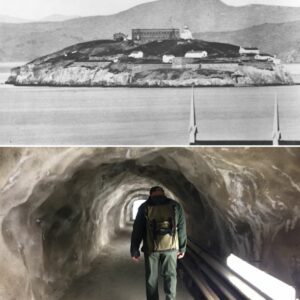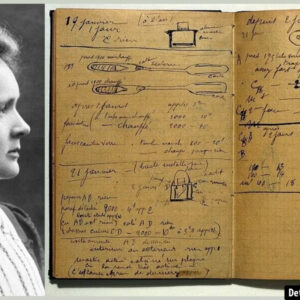Pablo Picasso’s self-portraits are not just reflections of his changing appearance but windows into the evolution of one of the most groundbreaking artists in history. Spanning his entire career, these portraits offer a unique glimpse into Picasso’s shifting artistic expressions, from his youthful realism to the abstract fragments of his later years. Each self-depiction tells a story of transformation, not only as a man but as a visionary who continuously reinvented his own image. By tracing these powerful portraits, we witness Picasso’s journey through the eyes of his own artistic identity.
The Early Years: Picasso’s Formative Self-Portraits
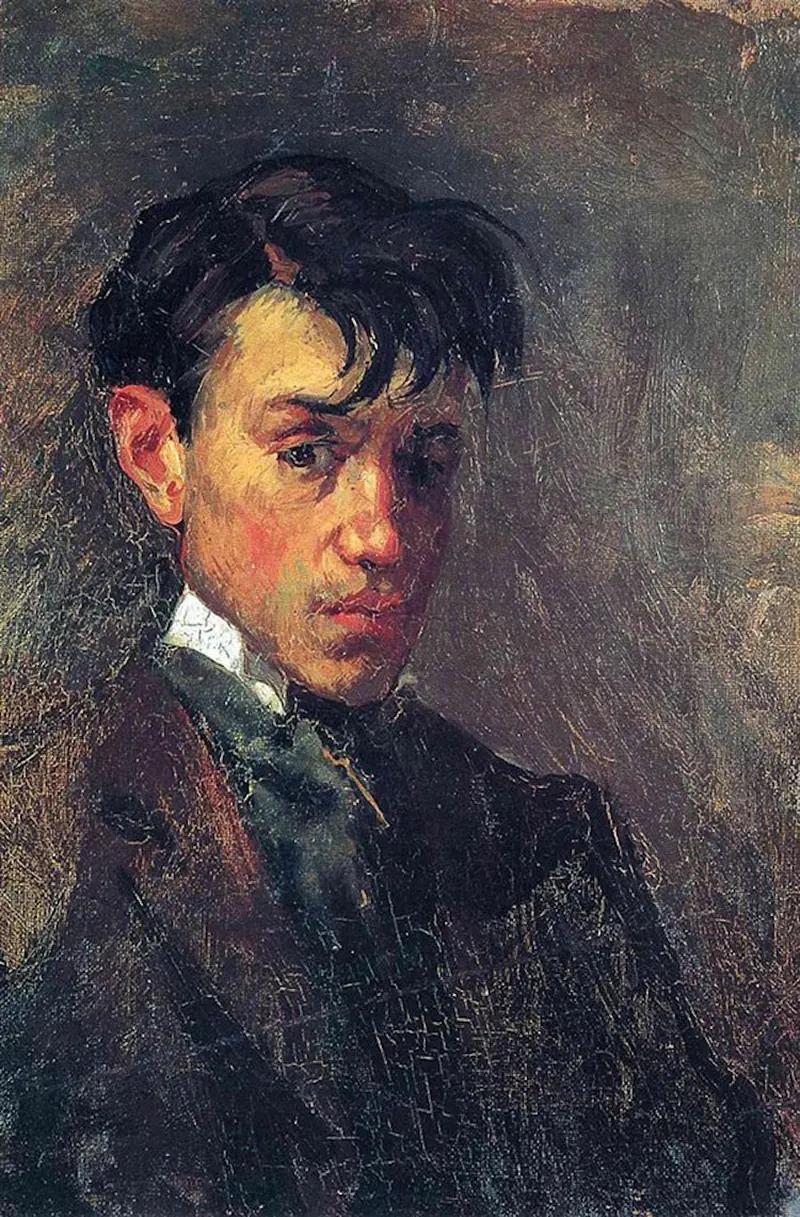
Picasso’s first self-portrait at the age of 15, Self-portrait with Uncombed Hair (1896), was a raw and earnest representation, highlighting the intensity and seriousness of his early years. Painted in Barcelona, this portrait already hints at Picasso’s command of the medium and his ability to portray emotional depth. At just 15, Picasso’s use of shadow and texture demonstrates the technique that would go on to define much of his later work.

By the time Picasso was 18, his self-portrait evolved further in complexity. In Self-portrait with Cloak (1900), painted in Paris late in the year, Picasso began to embrace a more introspective style. The cloak, a symbol of protection and mystery, added an air of melancholy to his self-image. The use of darker, more somber tones reflects the emotional weight Picasso was experiencing at this time. As he immersed himself in Parisian art and culture, his self-representations became increasingly informed by his evolving inner life.

At 20, Picasso’s self-portrait Self-portrait with Cloak (1901), painted in Paris, was pivotal in depicting his more mature technique. This portrait exemplifies the influence of his time in the French capital, where he first encountered the works of Symbolist painters and became increasingly connected to the bohemian circles of the city.
Video
Watch the video Picasso Drawing a Face in stunning 4K to witness the master at work.
The Blue Period: Emotional Depth in Self-Expression
The transition from Picasso’s youthful realism into his emotional Blue Period (1901–1904) marked a significant shift in his approach to portraiture. The self-portraits from this time are imbued with sadness, melancholy, and introspection, characteristic of the muted blue tones and somber themes. Picasso’s Self-portrait from this period is a haunting exploration of his inner world, filled with the pain of personal loss, isolation, and social unrest.
The Blue Period’s melancholic color palette and subdued forms, while visually somber, reveal Picasso’s deep engagement with the human condition. These self-portraits were not just about how Picasso saw himself but about the pain and fragility of humanity that he saw all around him. The Blue Period marks Picasso’s first significant attempt to use art not just for personal expression but as a vehicle to communicate deeper emotional truths.
The Rose Period: A Shift in Tone and Style

By 1904, Picasso entered what is known as his Rose Period (1904–1906). This shift marked a departure from the sadness of the Blue Period, with warmer tones of orange and pink replacing the cool blues and greens of his earlier works. This change reflected a new sense of optimism, likely influenced by his growing recognition in Paris and the introduction of new themes, such as circus performers, harlequins, and acrobats. The self-portrait of Picasso from this period captures a lighter, more whimsical side, as he explored the symbolism of the harlequin—a recurring motif in his work.
In this portrait, Picasso’s use of bright, lively colors and the use of an almost playful tone marked a profound evolution in his portrayal of self. This period represents Picasso’s newfound sense of joy and an embrace of artistic freedom, a reflection of his happier personal life and the acceptance of his status within the Parisian art scene.
The African-influenced Period: New Dimensions in Picasso’s Art
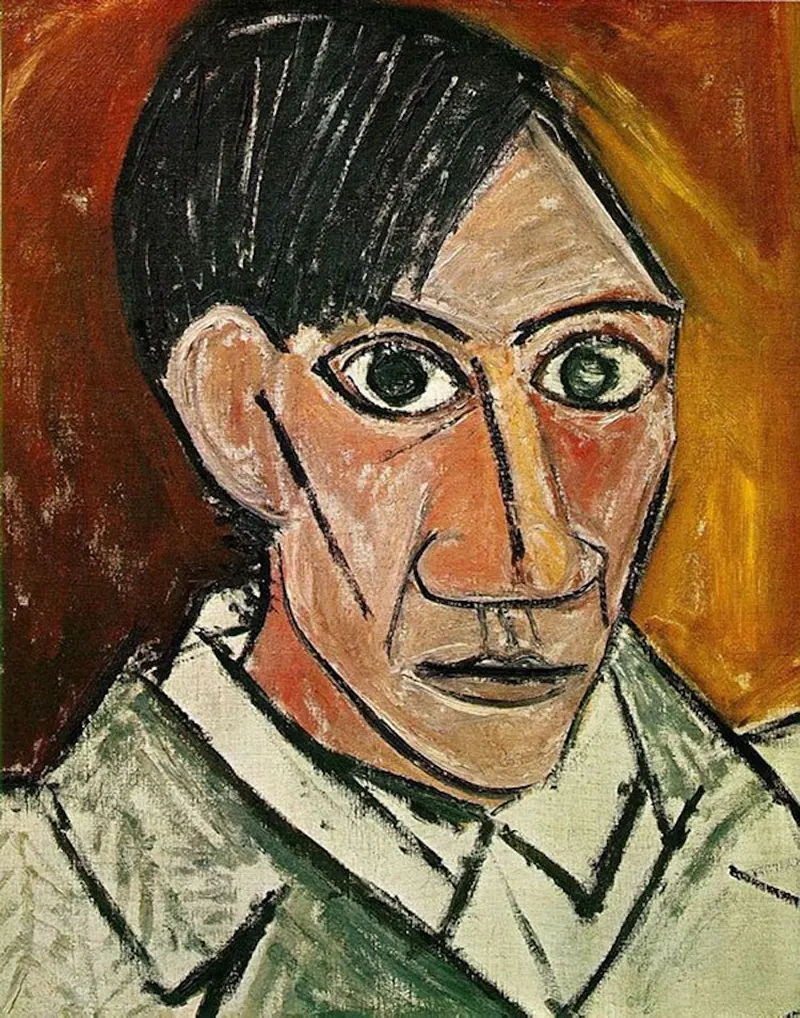
Picasso’s African-influenced period (1907–1909) was another transformative phase in his artistic development. Inspired by his exposure to African masks and artifacts, Picasso began to incorporate elements of these into his self-portraits. His work during this time culminated in one of his most famous pieces, Les Demoiselles d’Avignon (1907). The angular, stylized features of his self-portraits from this time reflect his fascination with African art, which he combined with his earlier experiences of Iberian sculpture.
The portraits from this period are marked by sharp lines, geometric shapes, and an almost primitive abstraction. Picasso’s use of angular forms and fragmented faces in these self-portraits suggests his growing interest in exploring new ways of seeing the world and himself, breaking free from traditional forms of representation.
Analytic and Synthetic Cubism: The Transformation of Form
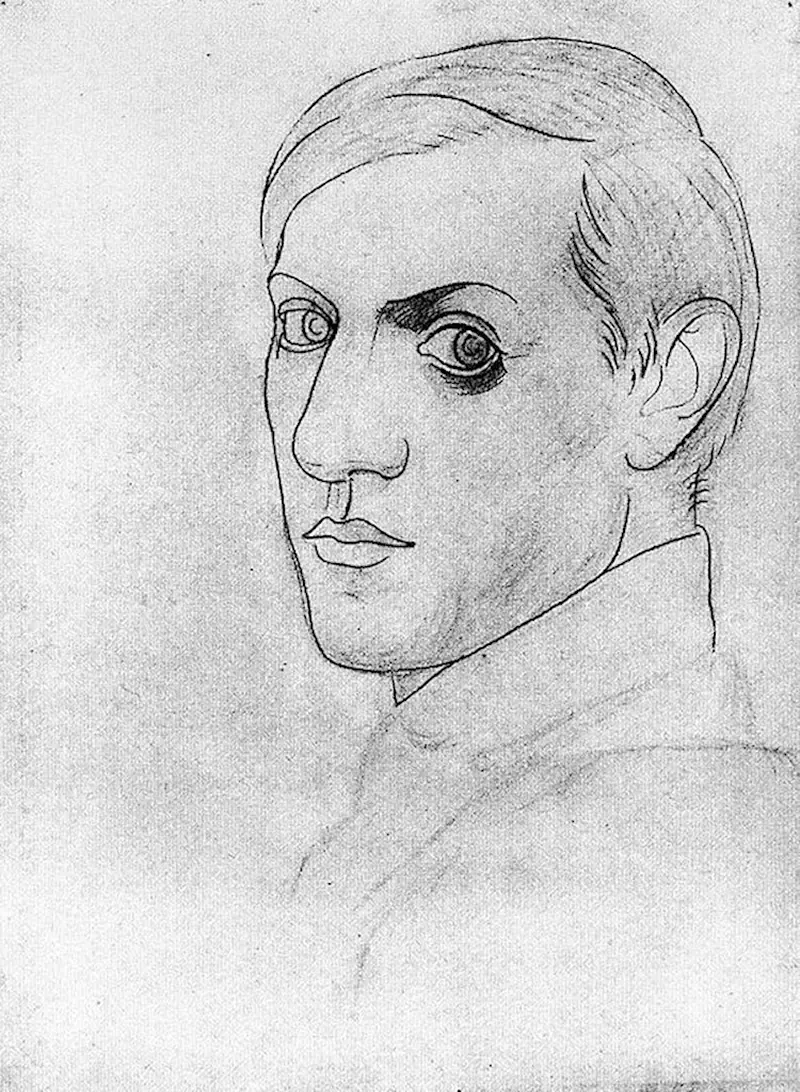
In the years that followed, Picasso entered the Cubist phase, which revolutionized the world of art. His self-portraits from this time, particularly during the Analytic Cubism (1909–1912) and Synthetic Cubism (1912–1919) periods, show a complete rethinking of how to depict the human form. Self-portrait at 35 (1917) marks a distinct point in Picasso’s journey into Cubism. The subject’s face and features are broken down into abstract shapes and forms, deconstructed into facets of color, texture, and angle.
In this period, Picasso moved beyond merely reconstructing the human figure. He began to fragment and reassemble reality in abstract ways, experimenting with the perception of depth, perspective, and space. The Cubist portraits reflected Picasso’s intellectual engagement with art, turning self-portraiture into an exercise in abstraction and deconstruction.
Late Masterpieces: Picasso’s Later Self-Portraits
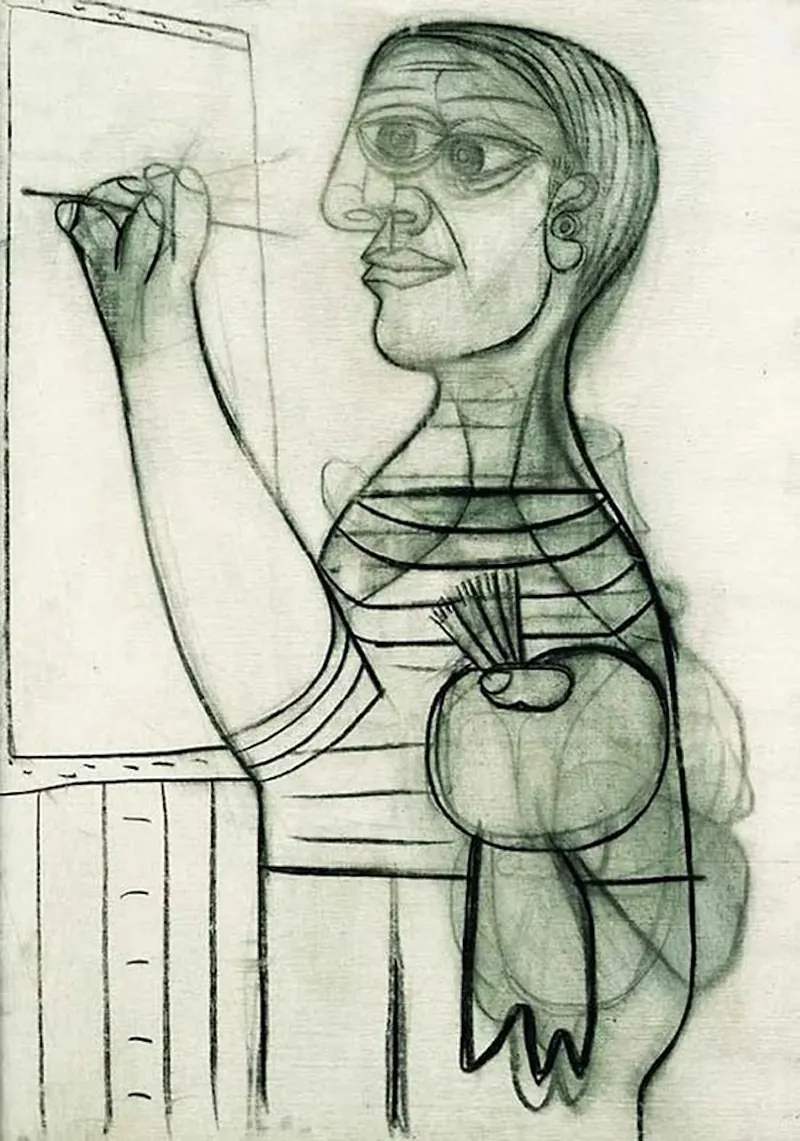
As Picasso matured, his self-portraits took on increasingly abstract and emotional qualities. In his 56-year-old self-portrait from 1938, titled Autoportrait, the artist captured the passing of time, using charcoal and pencil to create a raw and intense image. This portrait marks the intersection of Picasso’s neoclassical period with the surrealist influence that was beginning to shape his work. The sketchy, almost unfinished lines convey an urgency and emotional weight that reflect his ongoing exploration of identity and age.
As Picasso entered his later years, the abstraction of his self-portraits became more pronounced. From the age of 83 (1965) to his final self-portraits at 90, Picasso’s works became characterized by an increasing focus on simple yet intense abstraction. His final portraits, created just months before his death in 1973, showcase a profound awareness of mortality and the impermanence of life. Yet even at the end of his life, Picasso’s self-portraits retained a vitality and energy that is a hallmark of his work.
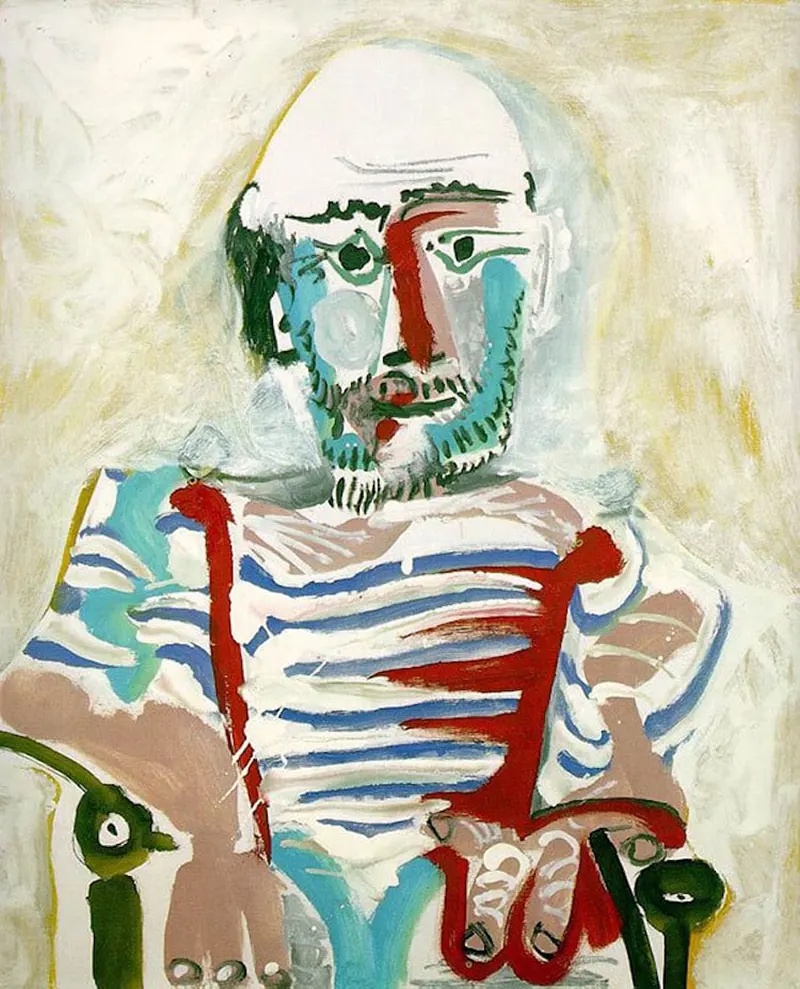
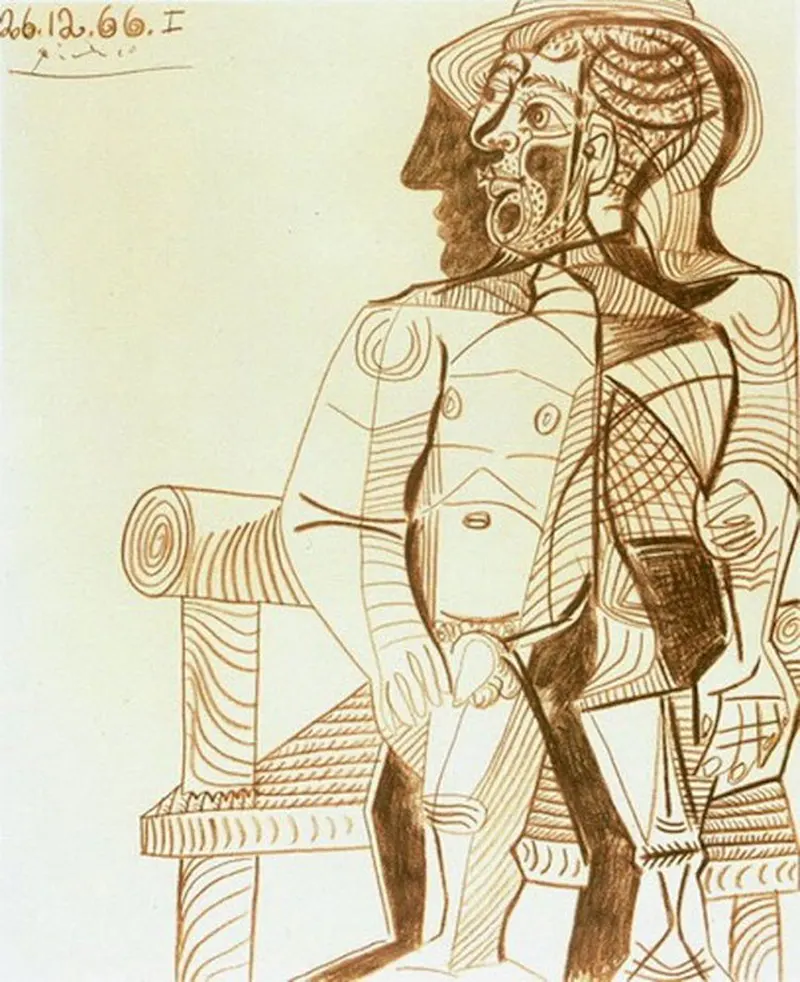

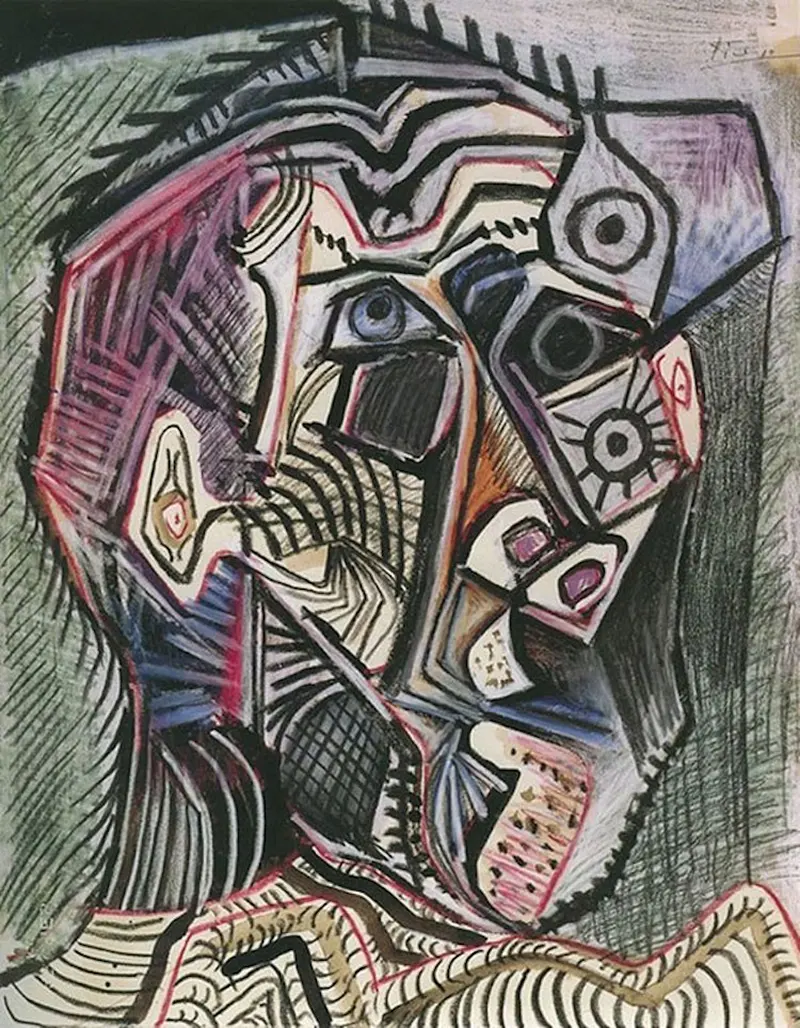
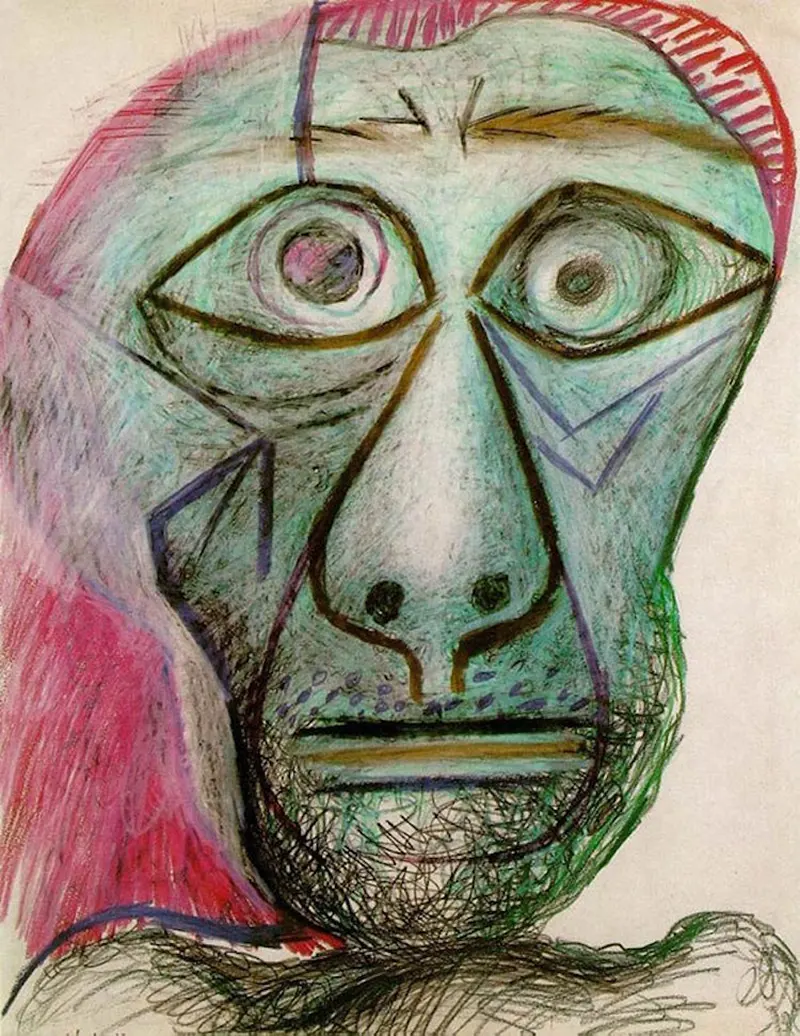
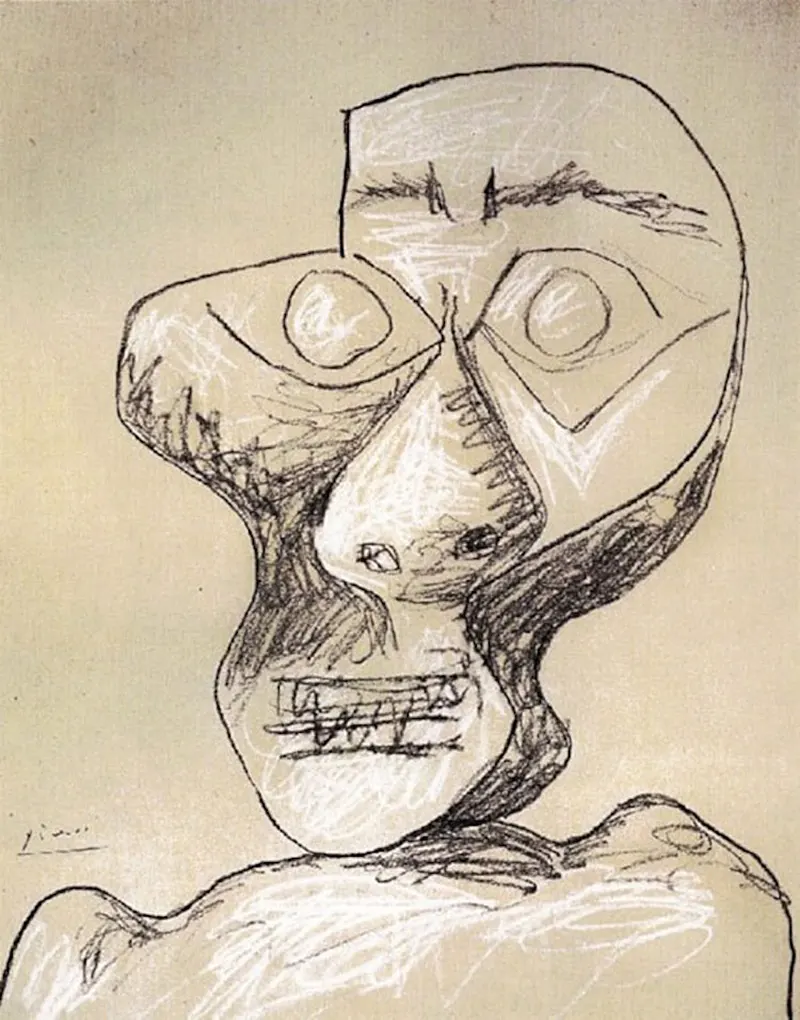
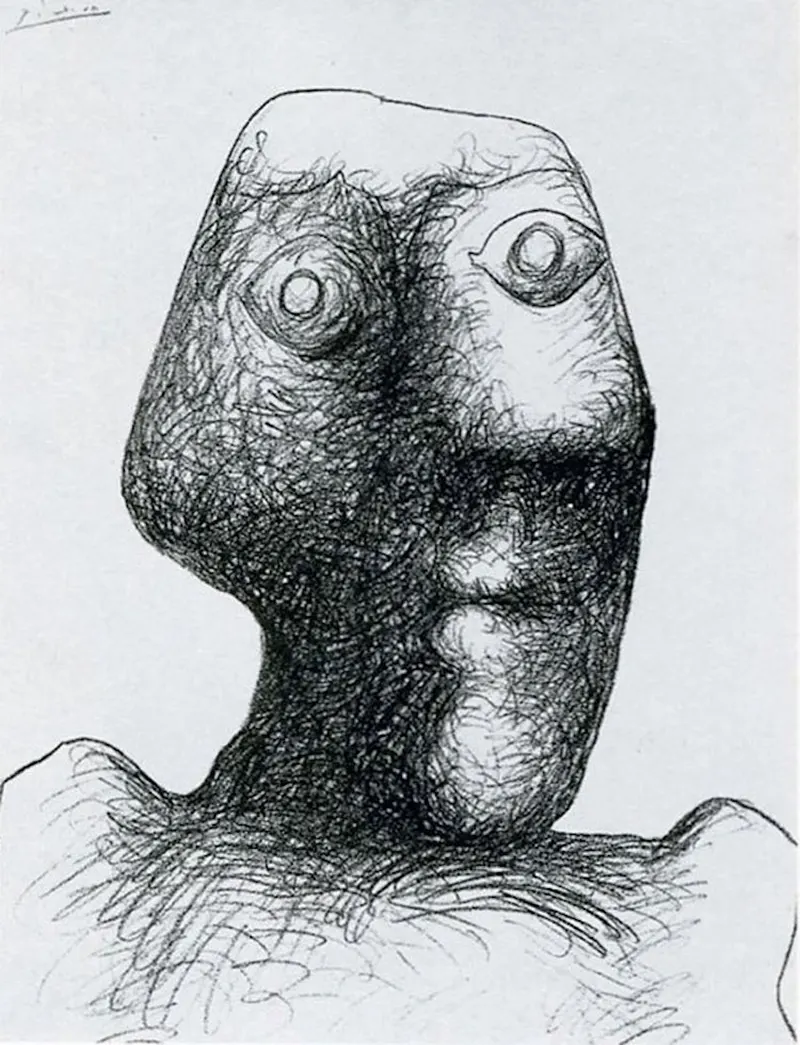
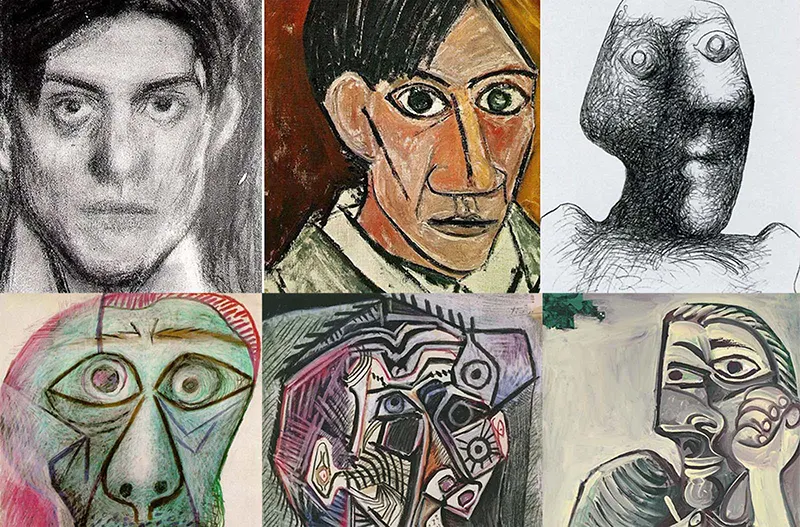
Video
Watch as Picasso brings a masterpiece to life in this fascinating video.
Conclusion: The Lifelong Evolution of Picasso’s Self-Image
Picasso’s self-portraits are an extraordinary chronicle of his evolving artistic vision. Over the course of his life, Picasso transformed from a young, realistic painter into a master of abstraction, but throughout his career, his self-portraits remained a constant exploration of identity and creativity.
Whether through the somber blues of his early years or the fractured forms of his later Cubist works, Picasso’s self-depictions offer an insightful look at his personal and artistic evolution. His ability to capture different periods of his life through the lens of portraiture serves as a reminder of his unceasing innovation and commitment to his craft. Ultimately, Picasso’s self-portraits stand as a testament to his genius, reflecting a lifetime of exploration, transformation, and artistic mastery.

